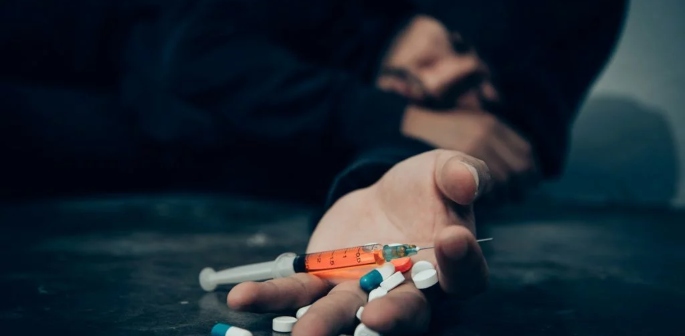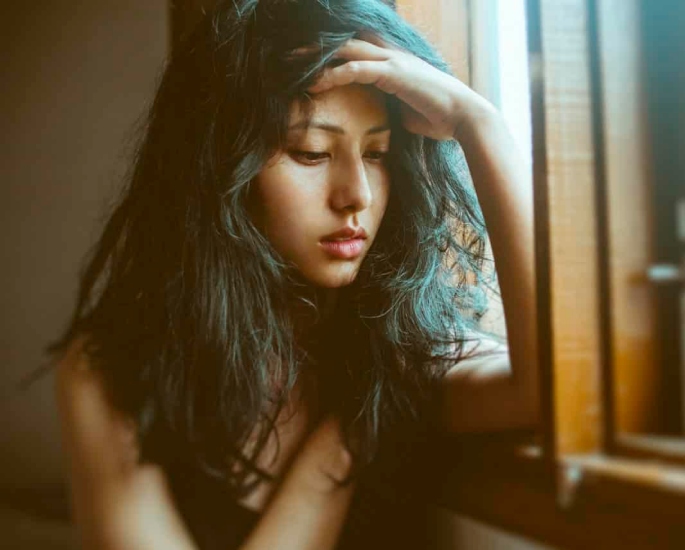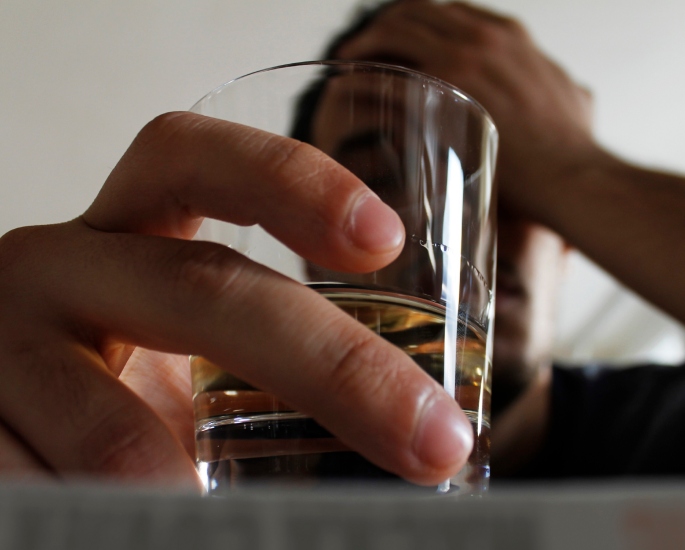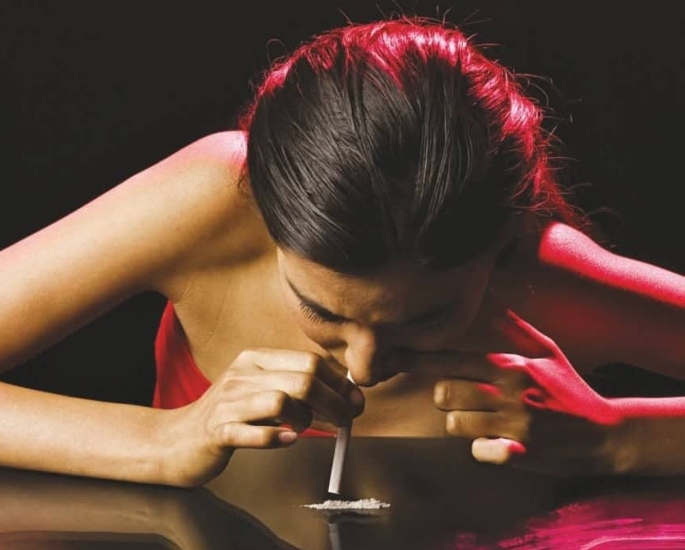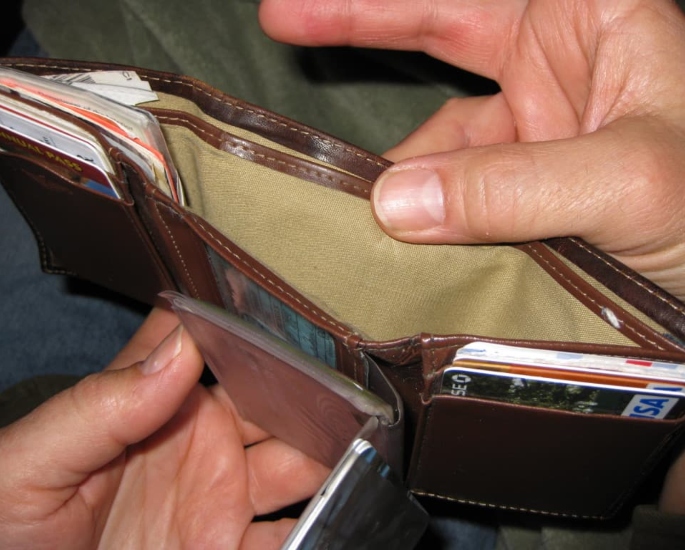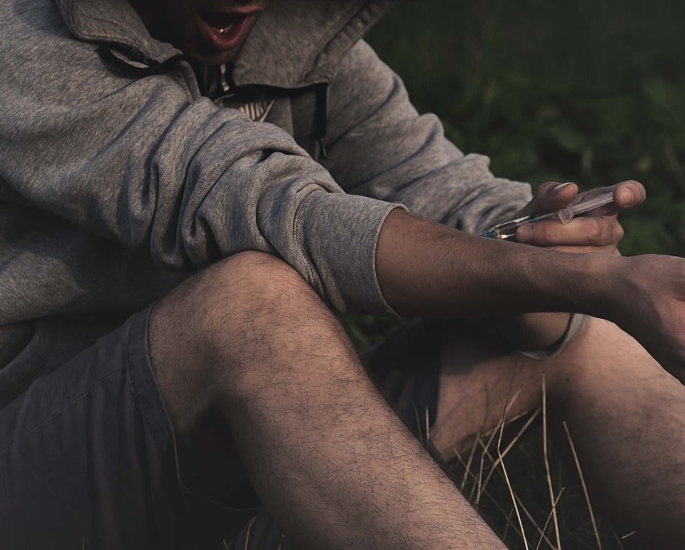You may see them more paranoid or anxious
Among South Asian cultures, the discussion around drug addiction is not as prominent as in other diasporas.
Often, addiction of any kind is met with judgment and shame.
This is due to the importance and traditional expectations put on family honour and status within South Asian communities.
When an individual is suffering from issues such as mental health and alcohol or drug addiction, the blame is put onto the victim.
Whilst it’s known that these problems can be rooted in child trauma, abuse, and internal factors, many South Asians don’t see it that way and often think it’s the victim’s own ‘dishonourable’ choice.
Wife to a recovering addict, keynote speaker and voted as one of the Top 100 Most Influential Muslims UK, Hannah Litt dived into this more in a Medium article:
“The South Asian community places a strong emphasis on maintaining a collective reputation.
“This means that this mindset stops conversations around addiction, mental health and trauma and it means that those in our community are left suffering in silence rather than being able to seek help.
“This is where things need to change, we need to see re-education happening in every space where we are around addiction/mental health and all the things that impact the most vulnerable in our community.
“I have noticed the same themes around neurodivergence, and we also know there are links between neurodivergence and addiction.
“So if we are not changing the narrative through collective re-education then it’s impacting so many people in our community and the cost of this is lives.”
Hannah also documented some of the tremendous recovery journies of South Asian men in the community. One of these individuals was Rich.
Whilst his addiction was mainly related to alcohol, the feelings he expressed when he was at his lowest are also similar to those suffering from drug addiction.
Rich explained his emotions in detail, saying:
“I can only describe it as me having a battle with a powerful monster in my own head that I was powerless over.
“No matter how hard I tried, no matter how much I knew it was hurting the one person I loved more than anything else in the world.
“I think subconsciously I thought I didn’t deserve this love and life that was given to me.”
It’s vital that we understand the emotions and experiences of people and create safer spaces within South Asian communities for open conversations.
However, as Hannah hinted, reputation factor plays a significant factor in keeping people quiet, including addicts.
They themselves want to keep a reputation of being ‘normal’ because they know the backlash and punishment they can face if their addiction is public.
Therefore, it gets more difficult to spot addiction symptoms among those suffering.
However, there are five changes and actions to pay attention to if you believe someone could have a drug addiction.
This is to help the wider South Asian diaspora and signify change for the future.
Behavioural Changes
One of the earliest indicators of drug addiction is a noticeable shift in behaviour.
South Asian individuals struggling with addiction may exhibit withdrawal from cultural events, like weddings and family get-togethers.
Likewise, individuals grappling with drug addiction might distance themselves from close relationships, actively seeking seclusion to acquire or consume drugs.
There may also be a change in their responsibilities.
For younger addicts, a decline in school activity, lack of interest, or even taking care of pets can indicate an issue.
For older victims, they could miss work through ‘sickness’, fall behind on bills, and show disinterest in their partners.
There is a perceived necessity to keep their substance use private, leading them to fabricate details about their whereabouts.
Alcohol Addiction
Although alcohol addiction is also rife within South Asian communities, it could go hand in hand with substance abuse too.
Specifically in Punjabi culture, there is an importance and almost celebration of alcohol when at functions and parties.
Beer, whiskey, wine and vodka are all staples and you can almost find herds of men around a table drinking.
Although the majority of times, this is out of joy, excessive alcohol consumption is noticeable and dangerous.
You may find an individual knocking drinks back, mixing their alcohol, not eating and trying to reach a point of drunkenness that’s out of control.
When this happens on more than one occasion, then it may be time to seek help.
This is because a high alcohol intake can also substitute for not being able to take drugs in a public setting.
It offers the same level of ‘numbness’ that some drugs offer.
However, excessive drinking can also develop into a drug addiction itself.
Therefore, it’s important to notice if someone is turning to alcohol regularly, how much they’re consuming and the environment in which they’re drinking.
Psychological Changes
When individuals misuse drugs, there are psychological signs, with alterations in thought patterns, attitudes, beliefs, and priorities.
Most South Asian families are tight-knit, with the young cousins having their own groups and everyone enjoying each other’s company.
However, if there are sudden changes in a person’s fundamental personality traits, then this could be a warning sign.
Additionally, you may see them more paranoid or anxious, as well as having a negative self-perception.
The victim could also have a sudden or gradual pessimistic attitude toward life and could distance themselves emotionally from friends and family.
Sudden mood swings, feelings of hopelessness, irritability and mistrust are also vital characteristics that should be attended to.
These psychological signs underscore the multifaceted impact of drug addiction on an individual’s mental and emotional well-being.
Money Issues
Another challenge faced by individuals struggling with drug addiction is their finances.
While some manage to function as “functional addicts”, maintaining employment while supporting their addiction, this scenario is not universal.
As individuals delve deeper into addiction, many experience a decline in productivity.
They may exhibit fluctuations in energy levels, making them unreliable in their professional roles and potentially resulting in job loss.
Drug users are particularly susceptible to absenteeism due to withdrawals, or unpredictable behaviour.
Especially among South Asian families, a change in finances is pretty quick to realise.
Younger individuals could ask their parents for more money than usual and spend it quicker than before.
You may find someone is behind on their bills, regularly can’t afford simple items, or comes up with excuses to not pay for something.
Some drug users wait until payday and manage to splurge their wages on a weekend of binging.
Therefore, if there is a pattern of someone being lively and outgoing at the end/start of the month and then suddenly disappearing, they could be having some financial difficulty in relation to drugs.
Physical Signs of Drugs
Some behavioural or physical signs of the body can be difficult to notice straight away.
However, the effects of drugs are instant, and recognising these signs could be vital in helping someone recover.
As noted by The Recovery Village, there are some physical signs of certain popular drugs you can look out for:
Marijuana
- Red, bloodshot eyes
- Dry mouth
- The scent of sweet smoke in clothing
- Inappropriate or excessive laughter
- Sleepiness
- Eating excessively or at unusual times, particularly sweet or salty food
- Pungent aftershave smell (used to cover marijuana smell)
Hallucinogens (LSD, shrooms, PCP)
- Bizarre behaviour, including inappropriate affection, aggression or paranoia
- Excessive self-absorption or focus on objects
- Difficulty interacting with others
- Mood swings or confusion
- Dilated or irregular pupils
Stimulants (cocaine, ecstasy, prescription stimulants, meth)
- Hyperactivity or excessive talking
- Anxiety or irritability
- Giddiness or euphoria
- Flushed skin
- Grinding teeth
- Dry mouth
- Sore jaw
- Dilated pupils
- Skipping meals or sleep
- Sudden episodes of depression or paranoia
Heroin and Opioids
- Needle marks in arms, legs, or feet
- Wearing long sleeves or pants to cover needle marks
- Sleeping during the day
- Sweating or clammy skin
- Loss of bowel movement regularity
- Constricted pupils that do not respond to direct light
Inhalants (glue, aerosols, bloons)
- Difficulty seeing
- Nausea
- Watery eyes
- Runny nose
- Rashes around the mouth or nose
- Impaired memory
- Clumsiness
- An unusual number of spray cans or cream charging cylinders in the trash
The discourse on drug addiction demands a nuanced understanding of both the visible signs and the concealed struggles.
It becomes evident that identifying drug addiction in South Asian individuals necessitates a cultural sensitivity that goes beyond conventional criteria.
The stigma surrounding addiction underscores the importance of breaking the silence.
Promoting open dialogue, encouraging help-seeking behaviours, and dismantling the stigma associated with addiction can collectively help those suffering.
It’s also important to note that these signs can be evidence for other issues such as mental health or other addictions.
But, as mentioned before, these changes in characteristics can intertwine different problems and it’s vital to offer support as quickly as possible to avoid a domino effect.
If you are or know anyone suffering from drug addiction, reach out for support. You are not alone.



















































